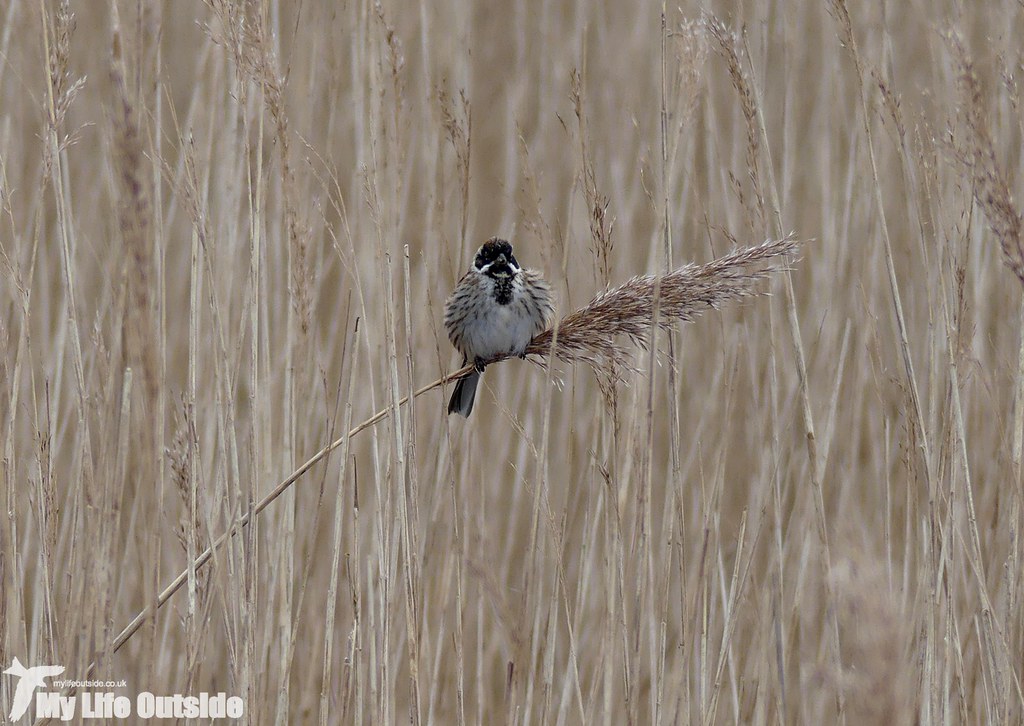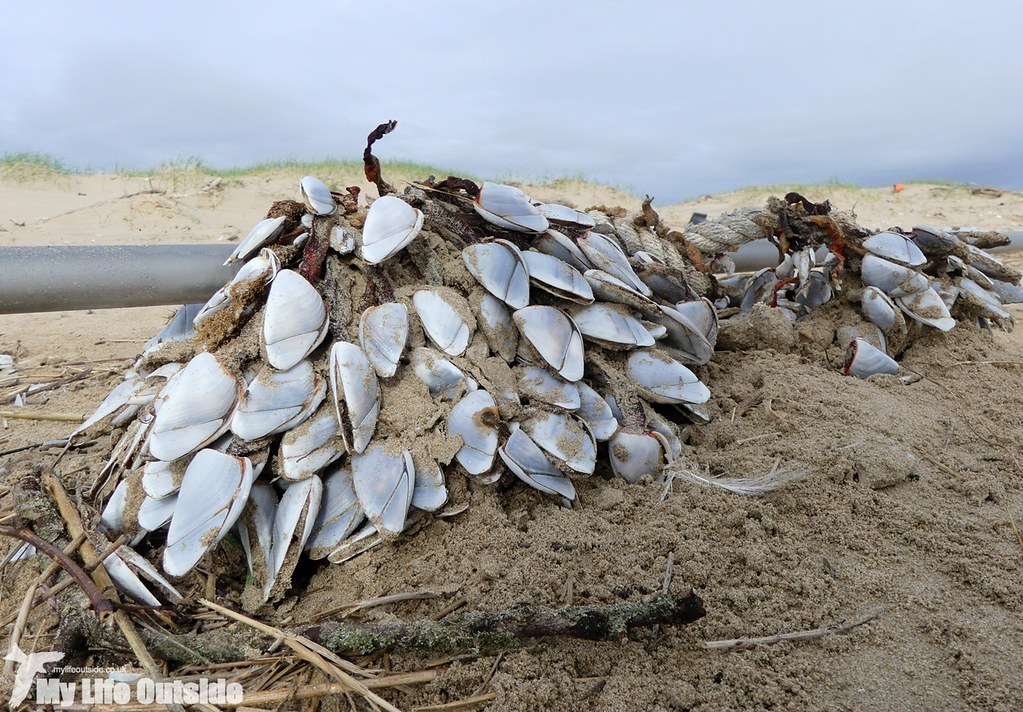After our success with finding Firecrest the weekend before I took to twitter on Saturday morning to proclaim that we were off to locate Brambling, one of those species with which we seem to have had little luck over the years. Our last proper sighting came from Ynys Hir back in 2011 when a pair gave great views just behind the visitor centre there. That was followed by a particularly stringy fly-over bird on my own local patch a couple of years later but since then, not a sign. Given that track record my public statement of intent may have appeared foolhardy but I was not without some local intelligence. Over the last fortnight I’ve been keeping my eye on reports of up to six individuals feeding in Sea Buckthorn at the entrance to Pembrey country park and fancied getting in on the action myself. Sightings were far from guaranteed however though upon arriving at the designated location things initially looked promising. A mixed flock of Chaffinches, Greenfinches, Goldfinches and various Tits were all feeding on remnants of the berry crop yet of the Brambling, there was no sign. In fact I was about to give up when we finally spotted our quarry buried deep within the Buckthorn. Result! The bird, a female I think, was only visible for a brief moment before hopping out of sight and despite much searching we failed to relocate it. That’s even after trying to get a better vantage point from the opposite side of the thicket which my legs still haven’t forgiven me for. Sea Buckthorn is a very thorny plant, take it from me.
Thankfully there were plenty of distractions to take my mind off perforated shins including a pair of Great Crested Grebes, male Red-breasted Merganser, Little Egrets and umpteen Redshanks whose constant calling could be heard across the Saltings. In fact their only real competition on the audio front were Skylarks, several of which were in full song in the clearing sky above us. Fulmars last week, singing Skylarks this week. Spring moves on apace. It seemed as though the Reed Buntings wanted to get in on the action as well with this noisy male calling from a nearby reedbed.

Overhead singles of Red Kite and Buzzard circled whilst we took our leave of the Buckthorn and headed out to the beach instead. What had been a very high tide earlier in the day had now retreated dramatically to reveal an absolutely huge expanse of sand. In fact the only evidence of the sea being present at all was the sound of breaking waves way off in the distance, a walk which we decided to leave for another day. Instead we followed the strandline for a mile or so in the search of bird skeletons mainly but finding plenty of Sea Potatoes and Cuttlefish instead. There was also a sizeable colony of Goose Barnacles washed up, a crustacean which is seemingly becoming a common sight on both sides of the Burry.

Skylarks were still an almost constant presence amongst the sand dunes, either singing overhead or feeding on the ground, yet none could be encouraged to pose for me or my camera. The same could be said of a pair of Ringed Plovers that flew towards and then beyond us across the sand. Perhaps they were also wandering where the sea had disappeared off to.
Returning to the park we had a final attempt at seeing the Brambling but once again could only manage the briefest of glimpses. What I hadn’t expected to find was a Woodcock which, presumably disturbed by our presence, shot out of the Buckthorn and proceeded to do a couple of wide circuits before disappearing off into the trees. As a result we had fantastic views of a normally secretive species, a great way to round off what this morning at least had seemed like a very ambitious mission indeed.



0 Comments